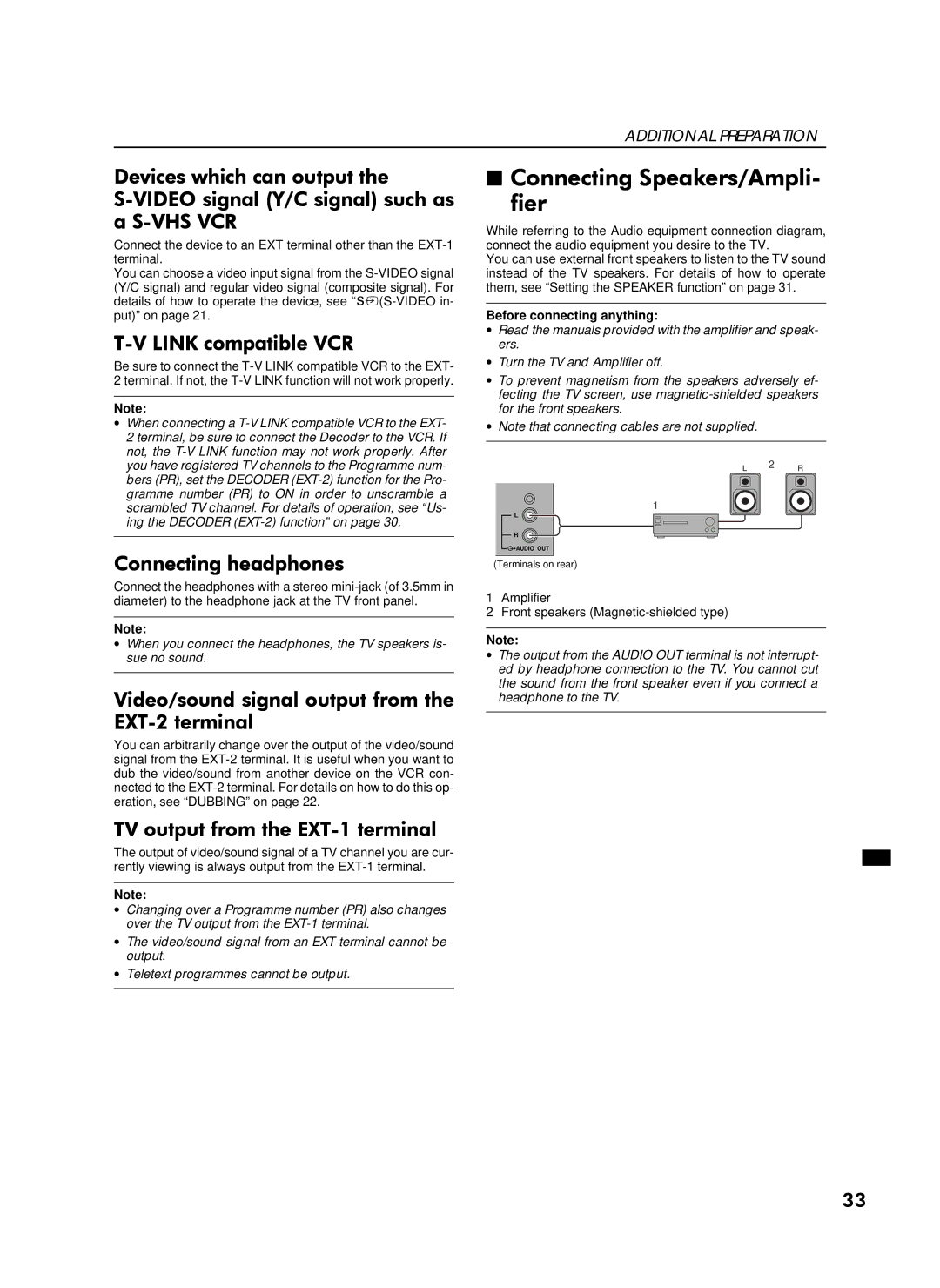
ADDITIONAL PREPARATION
'HYLFHV#ZKLFK#FDQ#RXWSXW#WKH#
609,'(2#VLJQDO#+<2&#VLJQDO,#VXFK#DV D#609+6#9&5
Connect the device to an EXT terminal other than the
You can choose a video input signal from the
709#/,1.#FRPSDWLEOH#9&5
Be sure to connect the
Note:
∙When connecting a
&RQQHFWLQJ#KHDGSKRQHV
Connect the headphones with a stereo
Note:
∙When you connect the headphones, the TV speakers is- sue no sound.
9LGHR2VRXQG#VLJQDO#RXWSXW#IURP#WKH (;705#WHUPLQDO
You can arbitrarily change over the output of the video/sound signal from the
79#RXWSXW#IURP#WKH#(;704#WHUPLQDO
The output of video/sound signal of a TV channel you are cur- rently viewing is always output from the
Note:
∙Changing over a Programme number (PR) also changes over the TV output from the
∙The video/sound signal from an EXT terminal cannot be output.
∙Teletext programmes cannot be output.
■&RQQHFWLQJ#6SHDNHUV2$PSOL0
ILHU
While referring to the Audio equipment connection diagram, connect the audio equipment you desire to the TV.
You can use external front speakers to listen to the TV sound instead of the TV speakers. For details of how to operate them, see “Setting the SPEAKER function” on page 31.
Before connecting anything:
∙Read the manuals provided with the amplifier and speak- ers.
∙Turn the TV and Amplifier off.
∙To prevent magnetism from the speakers adversely ef- fecting the TV screen, use
∙Note that connecting cables are not supplied.
2
1
L
R
![]()
![]() AUDIO OUT
AUDIO OUT
(Terminals on rear)
1Amplifier
2Front speakers
Note:
∙The output from the AUDIO OUT terminal is not interrupt- ed by headphone connection to the TV. You cannot cut the sound from the front speaker even if you connect a headphone to the TV.
66
